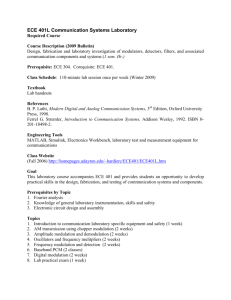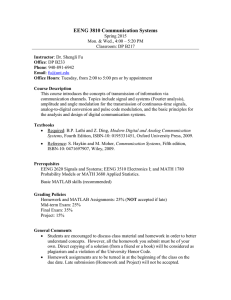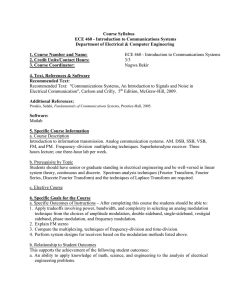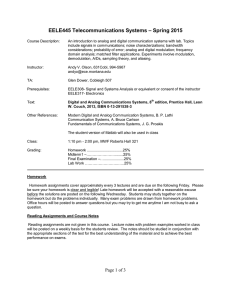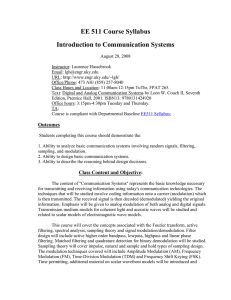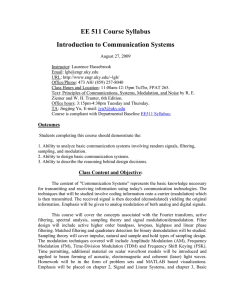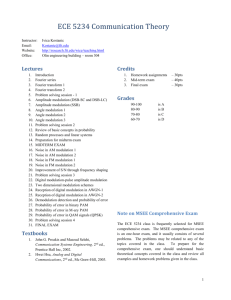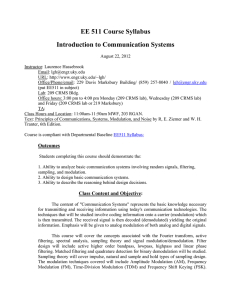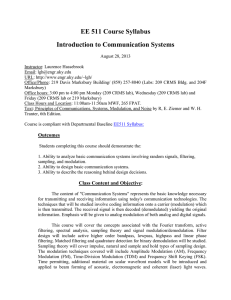Digital Image Processing
advertisement
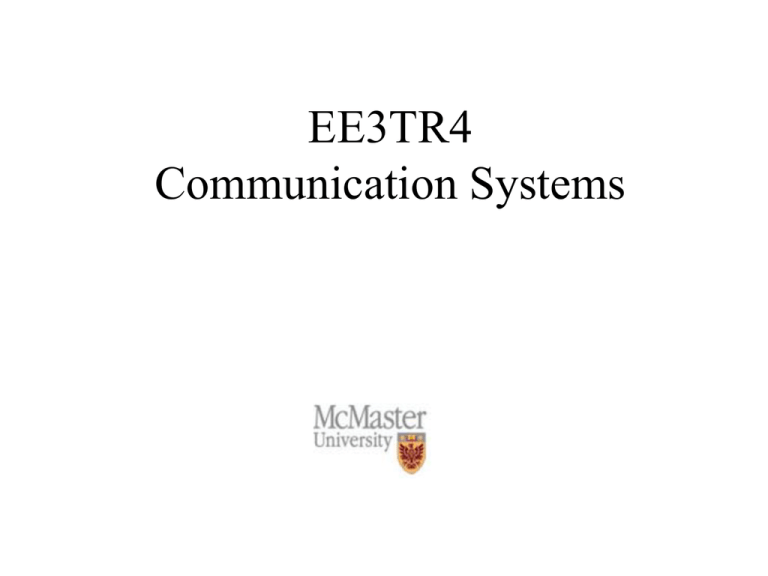
EE3TR4 Communication Systems Objectives • To provide an understanding of the practical communication systems such as AM and FM radio and digital modem. • To introduce the mathematical concepts such as Fourier transform and random process and apply them to communication systems. • To familiarize with various communication systems such as amplitude modulation (AM) and frequency modulation (FM) and compare the performance quality. 2 Text Books/Reference Books • Text book: – Text: An Introduction to Analog and Digital Communications, S. Haykin and M. Moher, 2nd Edition, John Wiley and Sons, Inc. • Reference: – “Communication Systems”, S. Haykin, 4th edition, 2001. Available at Thode. • Course notes: will be placed on the course website. 3 Course Outline The course material will cover the first chapters of Haykin in the approximate order presented in the text. It is expected that the material will cover at least Ch. 2,3, 4,7,8 and 9. This material will include: • Review of Fourier theory • Amplitude modulation (AM) systems • Frequency modulation (FM) and phase modulation (PM) systems • Pulse (digital) modulation systems 4 Course Outline • Review of random processes and noise, and modeling of noise in communications systems. • AM, FM and PM in the presence of noise. 5 Labs There will be approximately 4 labs throughout the course. The labs will consist of a combination of computer and hardware experiments. The outline for the labs is as follows: • Practical application of Fourier transforms • Double sideband suppressed carrier modulation • Random processes and noise. • AM-FM radio 6 Lab Timeline • Fourier theory – starts from the third week of Jan’08 and runs for three weeks. The output of a function generator is passed through a filter. The output of the filter is analyzed using oscilloscope and spectrum analyzer. First you will make a computer simulation using Matlab and later validate it experimentally. • DSB-SC modulation and demodulation: runs from the second week of Feb’08 for three weeks. You will be doing the experiment of modulating a 64 KHz carrier with a 4 KHz sinusoidal message. 7 Lab Timeline • Random processes – starts from the second week of Mar’08. Only numerical experiment using matlab. Evaluate the autocorrelation and power spectral density of the output of a filter driven by a white noise. • AM-FM radio : You will assemble a radio kit. The report is due in the first week of April. 8 Evaluations • • • • Final Exam Midterm test Labs Quiz 50% 20% 20% 10% Assignments will be handed out but will not contribute towards the course grade. There will be two quizzes during tutorials. 9 Contact Info • • • • • • Instructor: Dr. S. Kumar E-mail: kumars@mail.ece.mcmaster.ca Office hours:Mondays and Tuesdays afternoons. Office: CRL #219, Extn: 26008 Lab: ITB, Room 157 Web page of the course: www.ece.mcmaster.ca/~kumars/Communication_System/e e3tr4.htm 10
